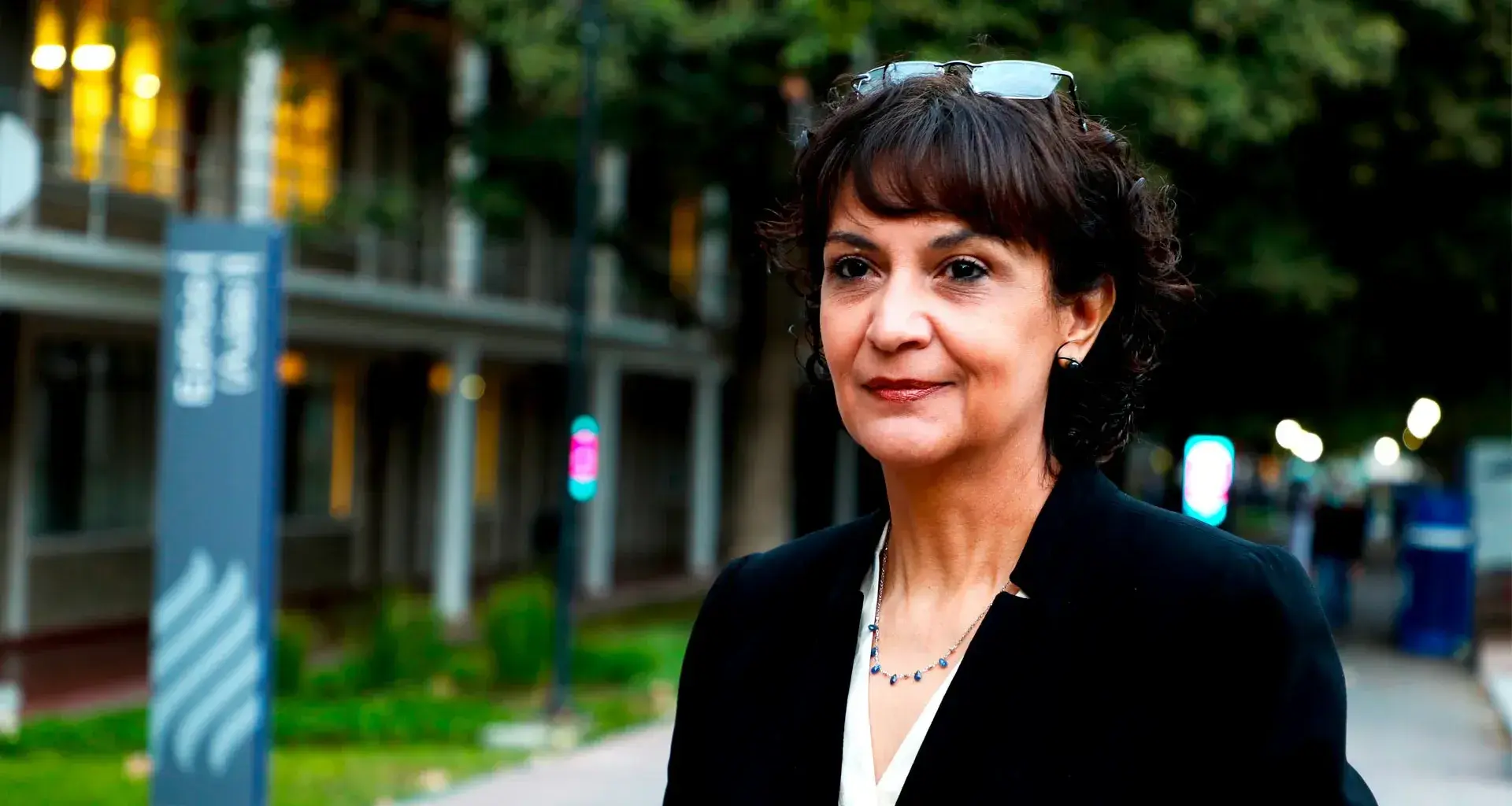“For me, teaching means generating knowledge in collaboration with my students. Being a good teacher means never losing the ability to learn alongside them.”
These are the words of Dr. Luz María Martínez, an outstanding professor in Chemistry and Nanotechnology for more than 20 years at Tec de Monterrey.
She has twice won the Inspiring Teacher Award, the highest award given by the Tec for teaching. Martínez has teaching experience at Arizona State University (ASU) and Rice University in Houston, Texas.
At the Tec, she is a researcher at the School of Engineering and Sciences and national director of the Nanotechnology program, in which one of her lines of research is creating pharmaceuticals with greater solubility.
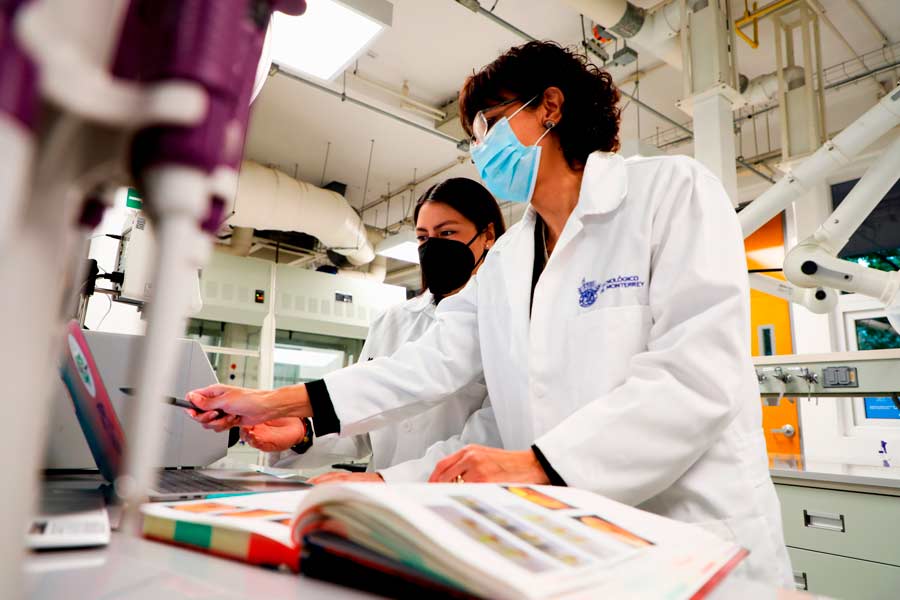
Research to make pharmaceuticals more soluble
One of the lines of research conducted by the Tec professor and her students focuses on making pharmaceuticals with greater solubility.
“Most of the pharmaceuticals consumed today are not completely soluble. They remain in our bodies and can cause side effects.
“As these pharmaceuticals have a crystal structure, we can modify this structure through different processes and make it much more soluble and much more efficient,” she explains.
The researcher shares basic concepts of chemistry with her students so that they can transform these pharmaceuticals and make them more bioavailable.
“We’re collaborating with the Tec’s School of Medicine and Health Sciences. It’s very interesting to see these papers get published in journals with the participation of undergraduate students,” she says.
Dr. Martínez has also participated in designing training units for Tec21 Model syllabuses and has promoted the progress made by women in science.
The Tec21 Model is based on challenge-based learning, a flexible environment, inspiring teachers, and a memorable student experience.
“One of the important things for me is teaching women who are scientists, engineers, or in STEM areas, motivating them to pursue degrees that will enable them occupy decision-making positions in the future,” she says.
STEM is the acronym for science, technology, engineering, and mathematics.
“One of the important things for me is teaching women who are scientists, engineers, or in STEM areas.”
Her method of training researchers takes her to Rice University
Her students at the Tec brought the professor into contact with Rice University, where she and her husband have been collaborating as adjunct professors for more than 10 years.
“The first contact I had with Rice University was at a conference organized by students, where I met Dr. Seiichi Matsuda, director of the Department of Chemistry.
“We talked about our research projects in the Chemical Sciences program and how we give students an idea and they develop it with a project,” she says.
The professor remembers that Dr. Matsuda was surprised to see undergraduate students participating in scientific publications.
“He was very struck by the involvement of undergraduate students in research projects of such quality that could be published in international journals.
“Because of this research scheme employed by my husband and me, he invited us to be adjunct professors. The quality of our students’ work has kept that relationship going,” she said.
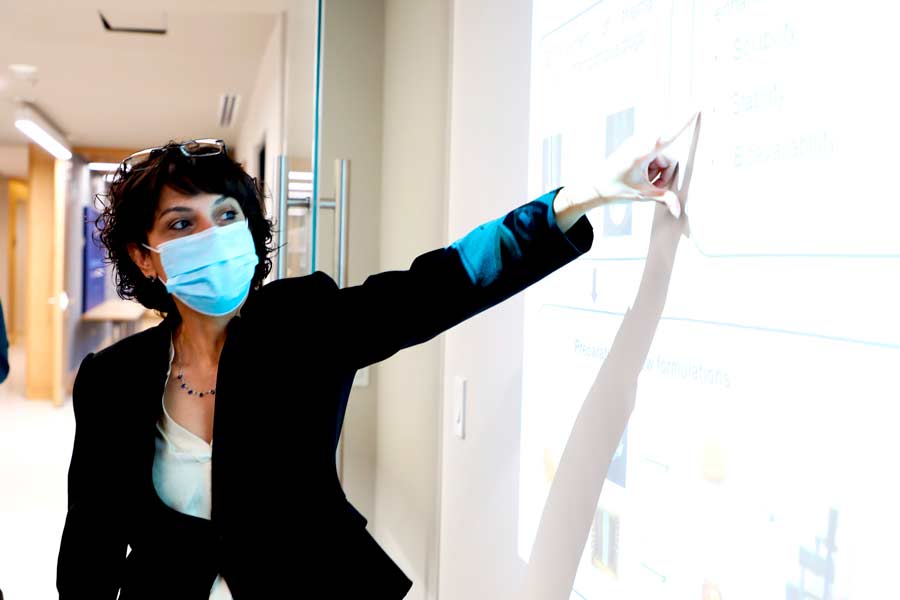
Her experience in the industry led her to teaching
After graduating from the Tec, the professor worked at Vitro, where she focused on chemical characterization of materials in the glass industry.
“At Vitro, I realized how you apply chemistry, in the sense that a glass you serve lemonade in doesn’t have the same composition as one you serve coffee in.
“Part of my projects there included developing an analytical technique to measure color in glass. We developed a method of implementing color in glass and in fact won an innovation contest,” she recalls.
The professor went to a conference at the Tec, which was also attended by an ASU speaker, a specialist in glass topics.
“He was a very famous researcher, Austen Angell, who was one of the people to generate the most knowledge in the area of glass. I talked to him, and he liked my profile and what we were doing with industrial glass,” she says.
With Dr. Austen as her advisor, the professor completed a Ph.D. in Chemistry at ASU, where she had her first teaching experience as Angell’s assistant professor, helping him in theoretical and laboratory classes.
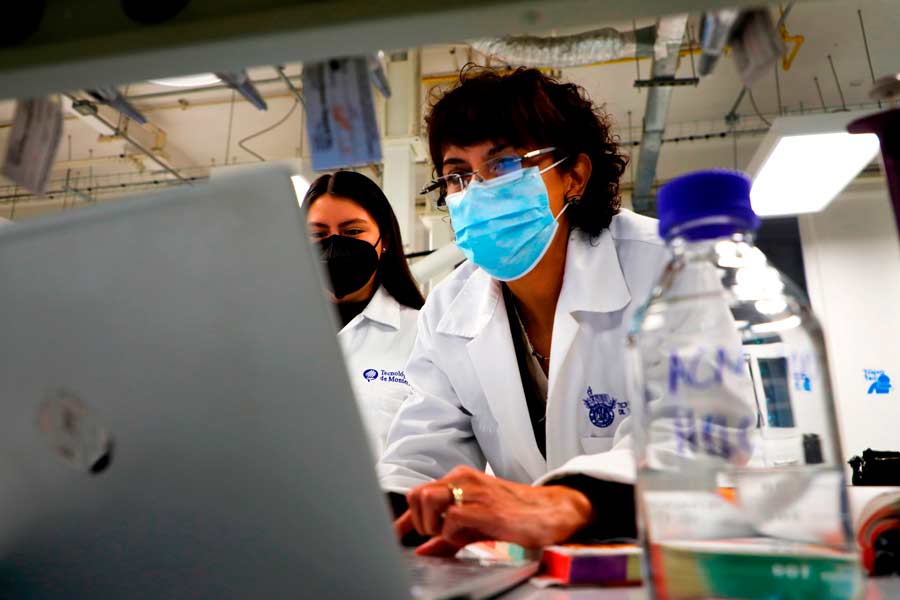
Inheriting a passion for science from her parents
Dr. Martínez, who hails from the town of San Buenaventura, Coahuila, remembers getting interested in science when she saw how her father solved problems by building things himself.
“My dad had only attended elementary school. Despite not having a university degree, he had skills we now talk about as critical thinking and problem-solving skills,” says the professor.
This is how Dr. Luz María, together with her brothers, was inspired to create and design things from an early age.
“Whether you were a boy or a girl, my dad always taught you how to build things. We didn’t have toys in the house, but there were always tools. If we saw a skateboard on TV, we built it with wood and some ball bearings,” she says.
In addition to learning to make the most of what little there was at home to build with, she got a taste for helping other people from her mother.
“In terms of learning about personal skills, I saw my mother always looking for ways to help others. My parents influenced my interest in the sciences and (passed on to me) that desire for building things and helping people,” she says.
Her academic excellence brought her to the Tec
Dr. Martínez’s interest in science led her to study at a technical high school, CBTis 36, in Monclova, Coahuila, where she studied Clinical Analysis and became interested in biological chemistry.
“I had great teachers, even in elementary school and junior high school. It was in high school where I earned a scholarship to study at Tecnológico de Monterrey.
“The Tec identified outstanding high schools and gave a scholarship to the best student of the school year. So, in my case, I earned that scholarship for academic excellence,” she recalls.
In high school, she saw herself pursuing a career in Medicine, and her interest in biology led to her win competitions. However, she decided to study chemistry.
“I realized that I could design pharmaceuticals, which in a way was related to Medicine. I think that was what interested me: how I could apply the design of materials or pharmaceuticals to the area of medicine,” she says.

A course professor who became her thesis advisor
When she was studying chemistry at the Monterrey campus of the Tec, Dr. Luz María met a professor who encouraged her interest in chemistry.
“I met a professor who would mark my professional life: Dr. Javier Rivas Ramos, a professor emeritus of the Tec. From him I learned how to apply chemistry in every area. He did consultancy work, and his students helped.
“One case I remember was that of a grain warehouse that caught fire, and the insurance company had to calculate the losses. So, we ran a simulation of the fire and calculated how much ash there was. We saw how chemistry was related to what needed to be paid,” she says.
She did her bachelor’s thesis with the professor’s help, and he was the one who helped her get her first job in the industry.
“I greatly admired Dr. Rivas for his way of teaching, much like what the Tec21 Model does now. He taught us with real situations and problems,” she says.
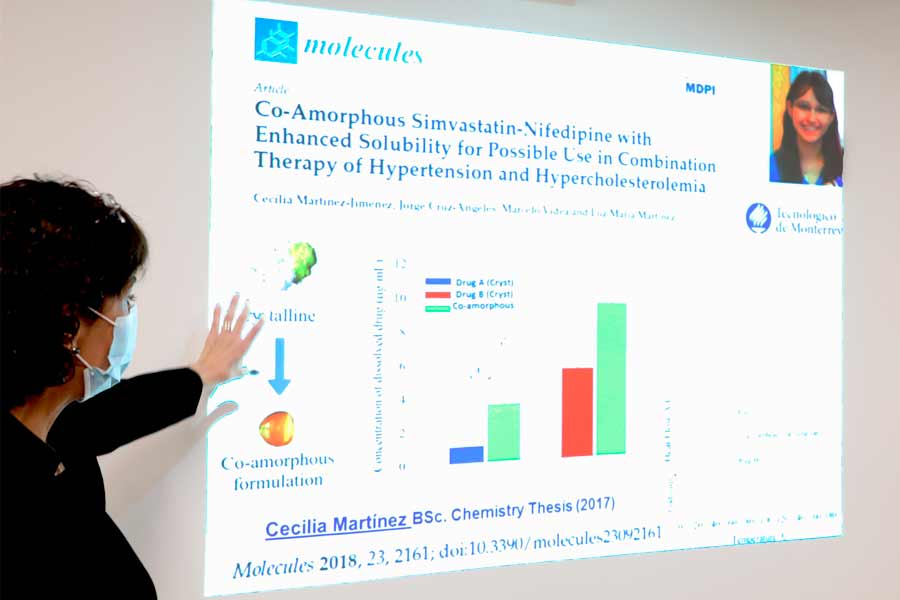
Sharing the experience of teaching with her husband
While collaborating as an assistant professor during her Ph.D. at ASU, Dr. Martínez discovered her passion for sharing her knowledge and learning alongside the students.
After completing her Ph.D., she returned to the Tec to become a full-time professor. She and her husband, Dr. Marcelo Videa (who also did a Ph.D. at ASU), began working as research professors in the Department of Chemistry.
“My husband has also been a fundamental part of my education. He taught me many things during my doctorate studies. He was kind of like a co-advisor.
“Dr. Rivas told us: ‘We’re looking for Tec professors,’ so we both came here together, each with our own line of research, his in the area of energy and mine in pharmaceuticals,” she shares.
Despite her passion for training young scientists, the national director of the Nanotechnology Engineering program says that fulfilling her dream of being a professor, researcher, and mother has been a challenge.
“I like being a researcher and a professor a lot. At the same time, I enjoy being a mom and a wife, and I’m grateful to have an administrative position now. Having so many things to do and dividing my time has been a challenge,” she added.
ALSO READ:

